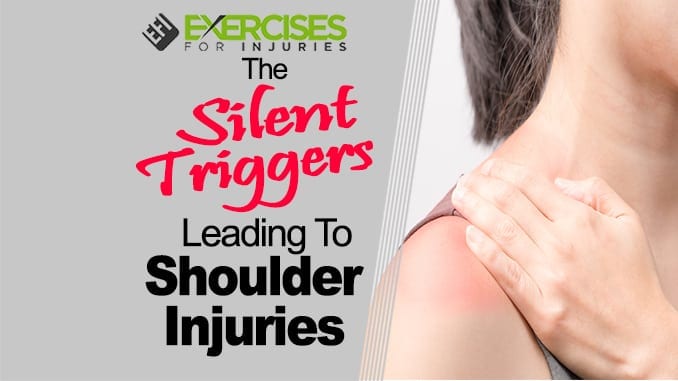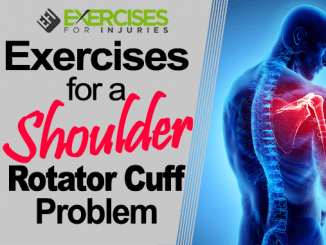
Part III: The Silent Triggers Leading to Shoulder Injuries
Leading into this final segment of this article we have discussed the kinetic chain response and how cueing can play an integral role in the retraining of functional movement. This week we are looking beyond the shoulder to the silent triggers of shoulder injuries.
As you know, I am really big into scapular exercises and teaching an effective rotator cuff exercise program.
I have another perspective on the shoulder for you. It is a guest blog post from Tara Keller. It is the third part of her series. Enjoy!
Addressing Shoulder Injuries Beyond the Shoulder Itself
By Tara Keller, BSc.(KIN), MES
The Shoulder was NOT the Cause of Shoulder Impingement
I recently helped a client who experienced recurrent left rotator cuff strain and had developed signs of early shoulder impingement to regain full function, but the direction that was required in their exercise program may come as a surprise.
This particular client was an avid swimmer and would also enjoy running on occasion. Their functional movement screen revealed the typical weaknesses in the external rotators of the shoulder, tightness in the internal rotators, and some scapular (shoulder blade) instability that included weakness in the serratus anterior, lower, and mid-trapezium and compensation through the upper trapezium and latissimus dorsi.
Many trainers have learned to provide solid training programs to establish shoulder stability around the shoulder blade, support the strength of the rotator cuff, and regain mobility surrounding the shoulder.
This particular client had already been provided an excellent array of these exercises in the past, but their injury continued to recur despite their best efforts and they were ready to stop the cycle.
We progressed further through the functional movement screen, looking beyond the shoulder region itself. It was apparent that this client had significant tightness in their hip flexors, most notably on the right side (which happened to be their dominant leg).
If The Shoulder Was Not the Problem, What Was?
Upon further discussion, it was revealed that this client had taken up swimming to alleviate the joint stress of running. I was now able to provide them a much fuller picture of their training response: with tight hip flexors, I explained, it is like swimming with a weight hanging off your leg, dragging your leg down into the water. Their particular body attempted to counter this stress by adjusting action at the joints in their spine. One of the hip flexors, the psoas muscle, happens to attach to the lumbar spine and in the case of this client, was causing an extension response in the lower back.
Tight Psoas Did What to the Shoulder?
Subsequently, the thoracic spine countered this force by further rounding or flexing the upper back. Given that the right hip flexor was significantly tighter than the left, there was a more notable compensation through the opposing left thoracic region (keep in mind that the ribs are attached to the thoracic spine). This is the ideal position in which the left shoulder blade can become elevated and predispose someone to shoulder injuries. All of the muscles surrounding the thoracic spine, ribcage, shoulder blade, and rotator cuff on the left side were acting with new directions of force that initiated with action at the hip.
As the shoulder itself has the greatest joint range of motion available, it is forced to make the last attempt to correct for all the faulty joint movement below in order for this swimmer to continue traveling forward in the water. Over time this adaptive patterning generated shoulder injuries and dysfunction while their hip was acting as the silent trigger all along.
In your efforts to manage injury or retrain function it remains important to examine the body as a whole, as the sites of injury or regions of discomfort may be far from the source of weakness, immobility, and segmental breakdown. Identifying the compensatory strategies sets the stage for applying an effective correction to your movement patterns, sparing the body from injury and allowing for maximal movement economy.
About Tara Keller
Tara Keller is a Kinesiologist and owner of Essential Kinetics in Vancouver, BC, providing sport biomechanical analysis and corrective exercise training services. She is the co-developer of the “Building a Strong Foundation (BSF®)“ Instructor Certification program, providing accredited certification to therapists, trainers, and coaches in the training of endurance athletes in the gym. She also partners with Human Motion Strength & Conditioning Inc. to bring BSF® Classes to multisport athletes throughout the greater Vancouver area to establish their foundational joint stability and core strength in the prevention of injury and transfer of strength gains directly to performance. For further information, visit: www.essentialkinetics.com
Rick Kaselj, MS





